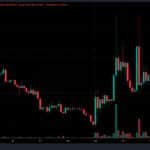
(VXX is an exchange traded note and a proxy for VIX.
However, as in many of these tracking instruments, there is a 'time delay' or contango cost that can diminish performance over time whilst still capturing the trend if you can pick the turning point.
VXX is based off of the VIX futures, if the futures carry a premium over spot, the VXX can fall even as the VIX rises. -AM)
Sept. 11 (Bloomberg) -- Odds of a U.S.-led “relapse” into global recession may be as high as one-in-three if any shock to the world’s biggest economy adds to depressed consumer demand, according to Stephen Roach of Morgan Stanley.
(You mean current depressed consumer demand isn't depressed enough? We'll see. -AM)
Economies emerging from recession need a “growth cushion” to avoid the possibility of a repeated slump, Roach, chairman of Morgan Stanley Asia, said in an interview in Dalian, China, yesterday, where he was attending a World Economic Forum event.
(They do ... 'my friend Harvey' statistics with chinese characteristics. -AM)
“The consumer is still dead money, the consumer is not coming back,” Roach said. “I’d put the relapse odds one in four, maybe as high as one in three,” he said, referring to the danger of a renewed global slowdown stemming from a shock to the U.S. economy.
(Hold on a second.. let me if I can illustrate the 80/20 rule.
The US consumer and state/local government are about 80% of GDP. That's about 20% of world GDP. Is growth here? Bueller?
After the Federales have monetized all the cows what will be left to give milk? -AM)
U.S. household incomes decreased in 2008 and the poverty rate rose to the highest since 1997, boosting concern that consumer spending will play a limited role in leading any recovery from the worst recession since the 1930s. Plunging home values and stock prices have fueled a record $13.9 trillion loss in household wealth in the U.S. since the middle of 2007.
The Federal Reserve this week said 11 of its 12 regional banks reported signs of a stable or improving economy in July and August, adding anecdotal evidence that the worst U.S. recession in seven decades is over. (Spin a din din. -AM)
The world’s largest economy contracted 1 percent from April through June, according to the Commerce Department. The drop was the fourth in a row, making it the longest contraction since quarterly records began in 1947.
Roach said that the “anemic” recovery in the U.S. will make the economy more vulnerable to shocks -- anything from storms to strikes (or time and price -AM) -- that could drag down global economic growth next year.
While he didn’t rule out the possibility of a relapse into recession, he said he wasn’t “calling for a double-dip because I’m not calling for a shock.”
(The shock will be if the NBER even calls this blip a recovery. A jobless recovery is an oxymoron. -AM)
“The recovery is going to be so anemic, especially in the U.S., that the economy on an underlying basis is going to be a lot closer to the stall speed than would be the case in a normal V-shaped recovery,” Roach said. “Stall-speed economies are risky economies because if you have one of these shocks out of the blue and you’re barely growing at the stall speed or a little bit faster, you can have a relapse pretty darned quickly.”
(When I think of stall speed I do think of a V shape. An upside down V that is. -AM)
Officials from the Group of 20 nations this month expressed caution on the world economic outlook and judged it premature to start unwinding record-low interest rates and about $2 trillion in fiscal stimulus.
(Hocus pocus of keeping those inflation expectations anchored. Guide the deflationary beast by the pied piper of appropriate communications. -AM)
“Over the next three to five years, given the savings imperatives of the American household sector, I think that the growth rate is going to be cut in half,” Roach said, referring to U.S. consumption. “For export-led economies in China and elsewhere in the region, the biggest source of external demand is going to be growing at best, half the clip.”
(We have not made adjustments for this new level, this new normal. Half a clip perhaps but from a level that has not yet been determined. -AM)
Treasury Secretary Timothy Geithner on Sept. 9 said the U.S. savings rate climbed to an average of 5 percent during the second quarter of this year from 1.2 percent at the beginning of 2008.
(It could hit 20%. To quote the Boss
...Now main streets whitewashed windows and vacant stores
Seems like there aint nobody wants to come down here no more
Theyre closing down the textile mill across the railroad tracks
Foreman says these jobs are going boys and they aint coming back to
Your hometown... -AM)




No comments:
Post a Comment